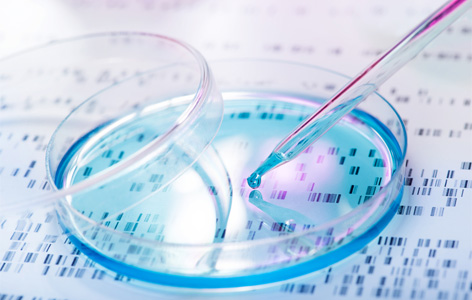Home page Description:
UHN researchers first to generate functional pacemaker heart cells from human stem cells.
Posted On: January 23, 2017

Image Caption:
Pluripotent stem cells can give rise to almost any cell type. The right amount of signaling molecules given at the right time determine cell fate.
The heart beats thanks to electrical impulses originating from pacemaker cells. These cells are clustered within a specific region of the heart known as the sinoatrial node (SAN)—the ‘natural pacemaker’. Cells of the SAN can become compromised in disease or aging, leading to an irregular beating pattern and even fainting.
Repairing the SAN and re-establishing a regular heartbeat has traditionally been accomplished by implanting an electronic pacemaker. Like any surgery, pacemaker implantation involves risk. Moreover, electronic pacemakers only last seven years on average before needing to be replaced. And in rare cases, pacemakers can fail, leading to sudden death.
In a ground-breaking study published in Nature Biotechnology, PM Cancer Centre Senior Scientist Dr. Gordon Keller and colleagues discovered a way to grow human pacemaker cells from pluripotent stem cells.
Turning the stem cells into pacemaker cells was no small task. The team had to find just the right mix of signaling molecules to mimic what occurs during development. "What we are doing is human biology in a petri dish," says Dr. Gordon Keller. "We are replicating nature's way of making the pacemaker cell."
Next, in an experimental model, the team transplanted the pacemaker cells and found that they were able to regulate the natural heartbeat. The researchers noted that clinical trials to test biological pacemakers in humans are from 5 to 10 years away.
Long-term, the team hopes to develop a biological pacemaker that can be transplanted into patients who need an electronic one. More than 10,000 electronic pacemakers are implanted annually in Canada, with more than 120,000 patients living with them. If successful, the biological pacemaker holds the promise of being a lifelong cure.
This work was supported by the Canadian Institutes of Health Research, the European Research Council, the Technion-UHN International Centre for Cardiovascular Innovation, the Toronto General & Western Hospital Foundation and The Princess Margaret Cancer Foundation. GM Keller holds a Tier 1 Canada Research Chair in Embryonic Stem Cell Biology.
Protze SI, Liu J, Nussinovitch U, Ohana L, Backx PH, Gepstein L, Keller GM. Sinoatrial node cardiomyocytes derived from human pluripotent cells function as a biological pacemaker. Nat Biotechnol. 2016 Dec 12. doi: 10.1038/nbt.3745
Repairing the SAN and re-establishing a regular heartbeat has traditionally been accomplished by implanting an electronic pacemaker. Like any surgery, pacemaker implantation involves risk. Moreover, electronic pacemakers only last seven years on average before needing to be replaced. And in rare cases, pacemakers can fail, leading to sudden death.
In a ground-breaking study published in Nature Biotechnology, PM Cancer Centre Senior Scientist Dr. Gordon Keller and colleagues discovered a way to grow human pacemaker cells from pluripotent stem cells.
Turning the stem cells into pacemaker cells was no small task. The team had to find just the right mix of signaling molecules to mimic what occurs during development. "What we are doing is human biology in a petri dish," says Dr. Gordon Keller. "We are replicating nature's way of making the pacemaker cell."
Next, in an experimental model, the team transplanted the pacemaker cells and found that they were able to regulate the natural heartbeat. The researchers noted that clinical trials to test biological pacemakers in humans are from 5 to 10 years away.
Long-term, the team hopes to develop a biological pacemaker that can be transplanted into patients who need an electronic one. More than 10,000 electronic pacemakers are implanted annually in Canada, with more than 120,000 patients living with them. If successful, the biological pacemaker holds the promise of being a lifelong cure.
This work was supported by the Canadian Institutes of Health Research, the European Research Council, the Technion-UHN International Centre for Cardiovascular Innovation, the Toronto General & Western Hospital Foundation and The Princess Margaret Cancer Foundation. GM Keller holds a Tier 1 Canada Research Chair in Embryonic Stem Cell Biology.
Protze SI, Liu J, Nussinovitch U, Ohana L, Backx PH, Gepstein L, Keller GM. Sinoatrial node cardiomyocytes derived from human pluripotent cells function as a biological pacemaker. Nat Biotechnol. 2016 Dec 12. doi: 10.1038/nbt.3745




